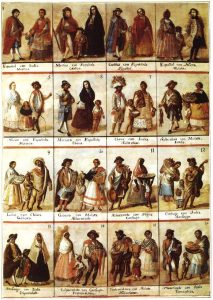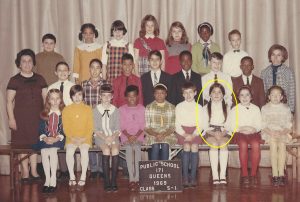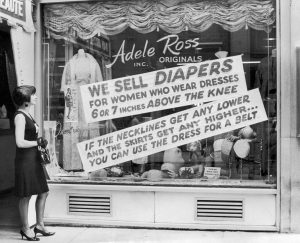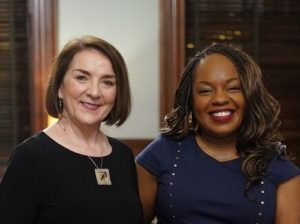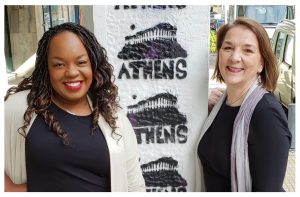Am Not!
Picture two siblings, perhaps eight and six years old. The argument may be over a toy, or a game, or who sat on whom, or any other rival-based competition. It may go like this: “You’re a liar!” “Am not! You are!” We used to say, “I’m rubber, you’re glue, bounce off me and stick on you!”[1] In other words, the original perpetrator of the crime turns the truth around and accuses the accuser of whatever act they just committed.
Did Not
In the same theme of denial, the success of the act of denial is dependent upon the denier’s credibility, or when that is lacking, their ability to persuade whoever is listening, that they are telling the truth, while denying it. I have had many dozens of perpetrators of discriminatory conduct patently, intensely, convincingly deny their culpability. This was always a challenge, although there were several occasions when I actually had the ‘smoking gun’ (in the form of a video or audio recording, an email or other evidence) in my hand while the perpetrator and liar vehemently argued their innocence. This allowed us to proceed with appropriate disciplinary action against the violator of the law.
You May Not
Denial takes many other forms as well. Denying someone access by not providing ramps, ASL[2] translators or closed captioning; denying someone service because of their race or gender expression; denying someone’s right to justice and equity, denying someone else’s right to even exist, are all too common and have a wide-reaching destructive impact on our world.
You Are Not
My dear friend, Derrick Kikuchi, who has extensive experience advocating for peace and social justice responded to my last blog post, “Peace Talks” by reminding me that there are those who not only refuse to come to the table to reconcile differences, but deny others the rights and protections that they enjoy. Specifically, he cited the many times when fighting for marriage equality as a gay man, that people would literally walk out on the conversation and argue that his right to marry his incredible husband, Craig Wiesner, somehow infringed on their rights. That if Derrick and Craig won equal rights, those opposing that progress actually lost something as a result. I agree that peace talks are not possible if both parties are not willing to sit down together and talk and believe in the possibility of reconciliation. I agree that as long as an individual believes (has been convinced or brainwashed to believe) that our humanity – our very existence – costs them anything they will not be able to come to the table and participate in the process of reconciliation. I have had quite a few people storm away from the reconciliation table as a result of this during my career. This sounds so simple and yet is so complicated. How do we get people to sit down with us to work on reconciliation and living together in peace if they have been convinced that our humanity takes something from them?
Is Not
The 100 billion dollar question: What do we do with the segment of our society whose intractable beliefs are predicated upon others being less than them or not existing at all? That science and facts and history are hoaxes and experts and intellectuals are the enemy? The group that I reference above do not fit into the argument for both sides-ism. Hate in all of its disgusting guises has no place in that discussion.
There are many white, ‘straight’, ‘Christian’, ‘middle class’, individuals (sorry about all of the quotation marks, but all of those words need qualification) who struggle with BLM, Act Up, peaceful protests and other acts of constitutionally protected speech that have been the vehicle for progress and advancing equity and inclusion for centuries. That is because they are exposed, on an extraordinary basis, to disinformation and misinformation. They are emotionally exhausted by the onslaught of negative input. (As we all are.) This makes it easier to manipulate them, trigger them, and herd them into division and resentment.
I am encouraged by those who sit through mandatory DEIAB training silently and experience an awakening, a transformation when a spark is lit, a seed is planted and their empathy and understanding of the value of diversity takes root. Often, these participants in my sessions will contact me privately after the session ends to share their transformation and tell me what they are thinking and feeling. We will discuss how to get past the discomfort inherent in difficult conversations so that they can participate in self-growth, acceptance instead of denial. I am focused on those individuals, people who are not avowed haters of diversity—fascists and white supremacists—but who are being influenced by them.
Self-Denial
My father, a tri-racial Puerto Rican, embodied internalized racism in ways that impacted me profoundly, and still does decades later. His denial of his heritage was evidenced by his regular proclamations that his blood was pure Spanish, not mixed with African blood or Taíno (indigenous Caribbean) blood. The implication is that his European white ancestors were of more value than his African and Taíno ancestors. Many BIPOC individuals struggle with this legacy of race-based slavery and colonialism. Centuries of being told that white people are superior because they held the power. My father was taught to be ashamed of who he was and how he looked. He passed those lessons in self-denial on to his children.
Denial
Denial is one word. A word that we need to give careful consideration when we refer to ourselves as ‘good communicators’ or ‘people’ people. Who are we envisioning when we imagine how good we are at communicating? Who comes to mind when we think of the people we are comfortable with? What are we denying about our own barriers to inclusion? How might we address that denial? One word at a time.
Antidote to Denial
In my previous blog post, the word that I shared was peace. I endeavor to facilitate experiences where people can come together and engage in constructive conversations about painful and difficult subjects. The methodologies that I employ to help participants to have peace of mind while embarking on this process include anonymous surveys, focus groups, online anonymizing tools that help people to be fully heard without feeling at risk of judgment and the resultant guilt that may accompany it.
These methods create opportunities for individuals to face the facts that they have been taught to deny. One conversation, one word at a time.
Onward!
Wendy Amengual Wark
June 28, 2024
Wendy@InclusionStrategy.com
Inclusion Strategy Solutions LLC
[1] We did not say “bounces off of me and sticks on you” even though that would have been grammatically correct.
[2] American Sign Language

